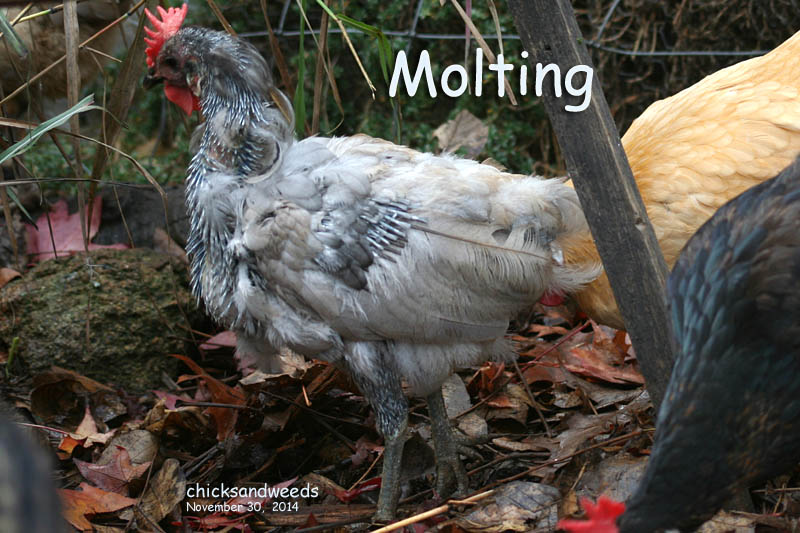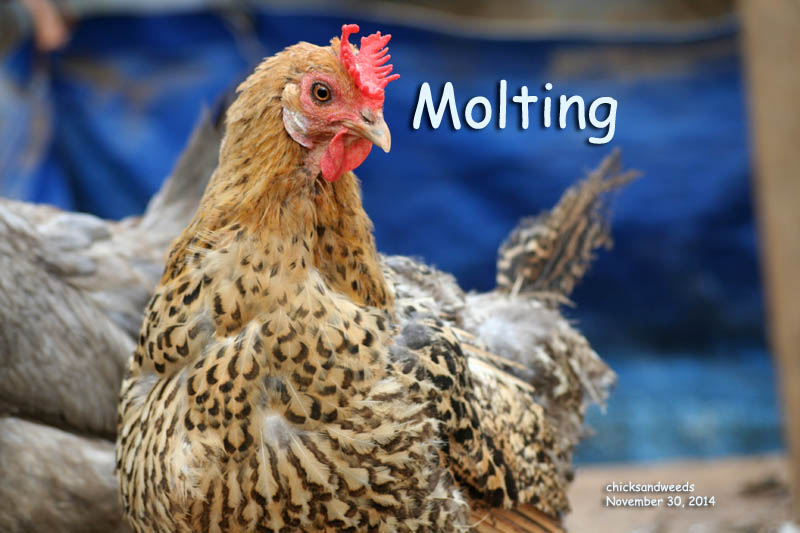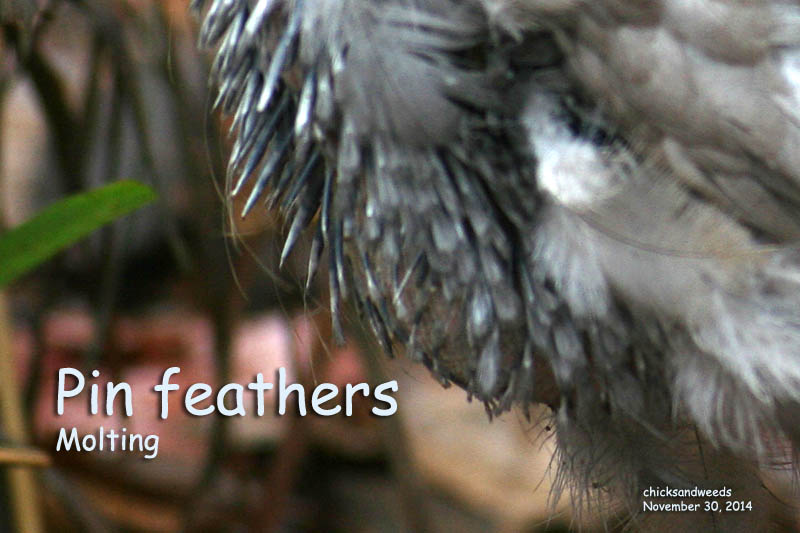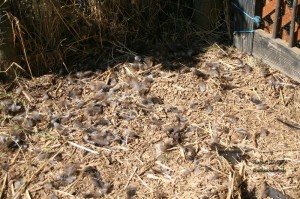 At first you start seeing a lot of feathers everywhere on the ground, which always seems a little scary. You notice too some of the chickens look scruffy, unkept and start to act weird, maybe less active, moping around, hiding, shy, loosing feathers and looking so so small and sometimes downright miserable and you look online to find out if all that is can be part of MOLTING – and yes, it can be. Here are the other nuts and bolts of molting:
At first you start seeing a lot of feathers everywhere on the ground, which always seems a little scary. You notice too some of the chickens look scruffy, unkept and start to act weird, maybe less active, moping around, hiding, shy, loosing feathers and looking so so small and sometimes downright miserable and you look online to find out if all that is can be part of MOLTING – and yes, it can be. Here are the other nuts and bolts of molting:
What is molting?
In birds, a full or part feather replacement and regrowth is called a molt.
Types of molt
Though in chickens there are only 2 natural types of molt (juvenile and adult), these here are the general natural 4 types of molt seen in birds:
- Juvenile to adult
- Non-breeding to breeding plumage
- Breeding to non-breeding
- General feather replacement
Molting patterns in birds can vary according to;
- species
- individual birds of the same species
- from year-to-year
- by individual feathers
There are also 2 other types of molt seen in chickens, well, technically subtyes or the general feather replacement molt: the stress molt and in the commercial laying industry, the forced molt. Neither of those are “natural”. More on those later.
For the reminder of this article, the annual molt of chickens is addressed.
Why do birds molt?
In chickens, the annual molting is simply a plumage maintenance as over time, the feathers get worn and damaged during everyday use and loose their full effectiveness. By the end of summer my chicken’s feathers actually look like they need a renewal. Especially for migratory birds it is important to have a full and balanced set of feathers. Since feathers cannot be repaired, they get replaced. Stresses can cause molting, as in food withdrawal and predators.
When do chickens molt?
The chicken’s juvenile molt happens at about 4-8 days – 1 month when the first feathers come in and again around 8 weeks when the more adult plumage starts to grow. Annual molting happens usually during late summer and in the fall, when the days are getting shorter and no resources and energy need to be expended on raising chicks. Basically a lot of birds molt after the chicks are raised for the year – and before migration. The first annual molt in chickens usually occurs in the fall of the same year that the chicken had a full spring, so usually around 18 months of age.
Egg laying and molt.
In layers, egg laying either slows, but most often, ceases altogether. Feathers are made of keratin, which is protein, and is energy-expensive to make. Laying eggs or raising chicks does not usually happen at the same time as the annual molt. A chicken that starts molting in the summer and then does not lay for several months – is not considered a good layer. Chicken’s can’t spend energy into making new feathers and eggs at the same time, so a molt also provides the hen’s reproductive system with a much deserved rest.
After molting, egg production will pick up again after the pre-molt slowdown, however, it usually is never as good as the early months of the pre-molt time.
How fast is molting?
A molt can be fast or slow, lasting a few weeks to several months, but the entire cycle typically takes 5-12 weeks. Ducks often molt in as little as two weeks, with a brief flightless period during the accelerated molting. (Raptors, pelicans and parrots have some of the longest molt cycles and may take up to two years to replace all their feathers). Some chickens can look scarily naked, while in others you can barely see when it is happening.
Molting pattern?
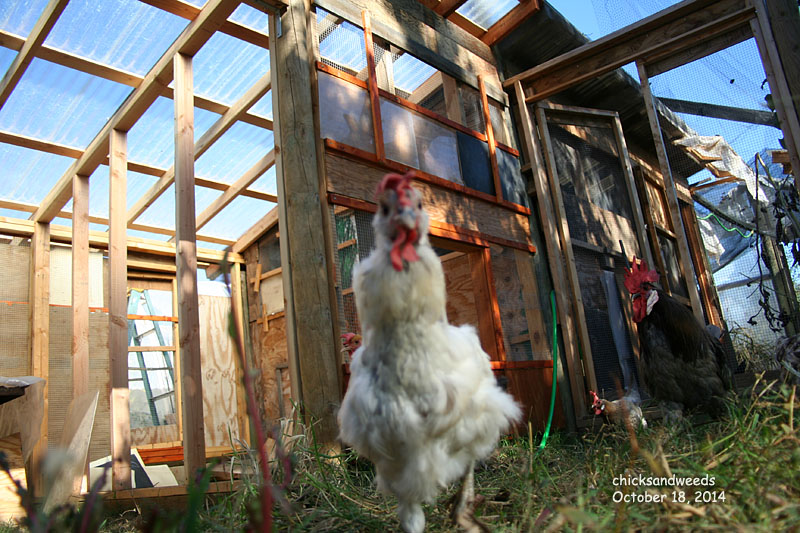 In general, feathers are molted in a symmetrical pattern across the bird’s wings, tail and body so it retains balance for flight. In my chickens, and contrary what I have read, the tail is one of the first to go, along with the neck and chest feathers.
In general, feathers are molted in a symmetrical pattern across the bird’s wings, tail and body so it retains balance for flight. In my chickens, and contrary what I have read, the tail is one of the first to go, along with the neck and chest feathers.
As feathers age, the quills loosen in their shafts and it is not until they are ready to fall out that they get replaced by new ones, first emerging as pin feathers.
The Dangers of Molting
Birds have thousand of feathers, chickens over 8000. Molting can be a dangerous period for birds if there are not sufficient resources for them to molt properly. Flying may be difficult if not impossible while molting, which makes birds more susceptible to predators, and while feathers are missing, a bird’s insulation and protection from poor weather is compromised. Injury to pin feathers can cause bleeding and being touch appears to be uncomfortable if not painful for the chickens
Feeding during molting
Good nutrition while molting is important, so feathers can form well and are not too thin. Extra protein is very helpful, as feathers are almost exclusively made of protein. I give my birds chick starter, some scrambles eggs treats and just add oyster shell for any non-molting layers. They also free range.
Handling during molting
Try to not expose the chickens to any added stress and reduce handling to a minimum – it seems that those incoming feathers make them hurt.
What is a forced molt?
This is from wikipedia: Induced molting (or forced molting) is the practice by the commercial egg industry of artificially provoking a complete flock of hens to molt simultaneously. This is usually achieved by withdrawal of feed for 7-14 days. During the molting period, the hens go out of production for a period of at least two weeks. To start a truly simultaneous molt of thousands of birds precisely enough to maintain near-constant egg supplies takes more aggressive measures than turning the lights off earlier. The technical terms are phrases like “dietary restriction” or “dietary stress” but the net effect – for chickens in many American egg farms – is two weeks of starvation. The commercial egg farms have done the math. No egg production for 2 weeks – even if it costs them 1.5% of their flock dues to the stress of no food – pays off in greater post-molt productivity.
Stress Molt?
I suppose the above mentioned forced molt is a stress molt, however, when attacked by a predator a bird may use a LOT of feathers all at once …so it is a predator stress molt.
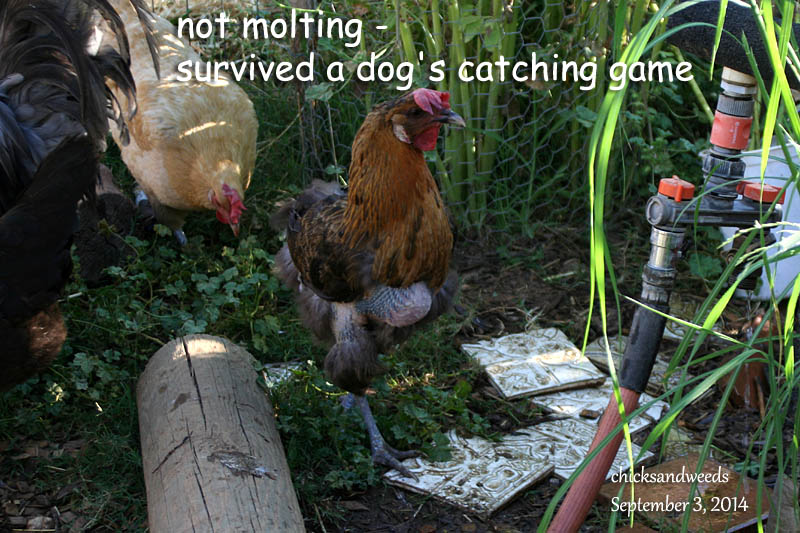
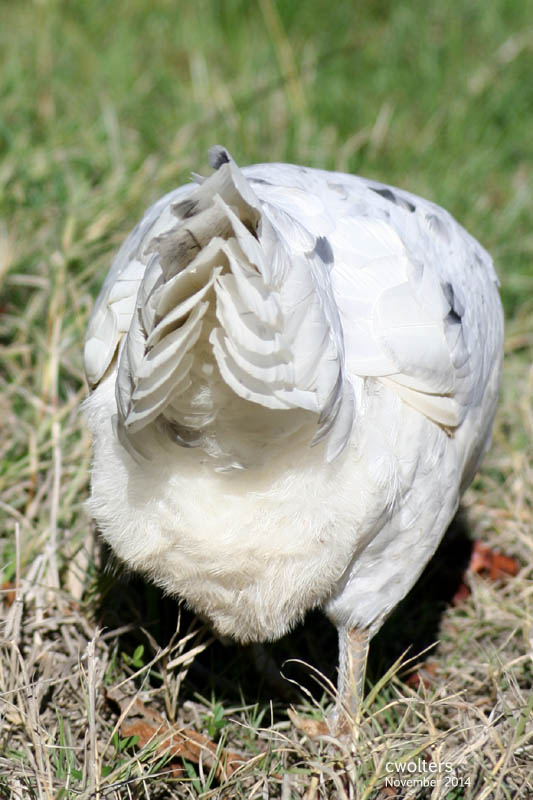
I was surprised when I observed that my chickens, some more than others, really changed their disposition and behavior. However, they will still eat and do at least some foraging and show no other signs of illness. And after molting, they look so so good – if only they’d start laying again soon 😉
You can find some general information about molting in birds here:

